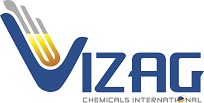Primary tabs

PYRIDINE
PYRIDINE It is especially suitable for the dehalogenation, where it acts as the base of the elimination reaction and bonds the resulting hydrogen halide to form a pyridinium salt.
Pyridine Molecular Formula is C5H5N, its Hetrocyclic structure is similar to Benzene RING. Pyridine is an alkaline colorless, flammable liquid. Pyridine release unpleasant smell.
Properties: Pyridine is miscible with water It is a weak base It is highly flammable It has a distinctive, unpleasant fish-like smell
Uses: Pyridine is used as a solvent in organic chemistry and in industrial practice It is used to make medicines, vitamins, food flavorings, pesticides, paints, dyes, rubber products, adhesives, and waterproofing for fabrics
| PRODUCT NAME | : | PYRIDINE |
| CAS number | : | 110-86-1 |
| UN number | : | 1282 |
| Formula | : | NC4H4CH |
| Odour | : | PUNGENT |
| Solubility in water | : | COMPLETE |
| Density | : | 0.982 at 20 oC |
| Boiling point | : | 115 oC |
| Melting point | : | -42 oC |
| Viscosity | : | 0.97 cp at 20 oC |
| Flashpoint | : | 17oC |
| Explosive limits | : | 1.7 – 10.6 Vol% |
| Vapour pressure | : | 20 mbar at 20 oC |
| Skin absorption/irritation | : | 20 mbar at 20 oC |
| TLV Country NL Year 1995 | : | 5 ppm 15 mg/m3 |
| Pollution category 1994 | : | D |
